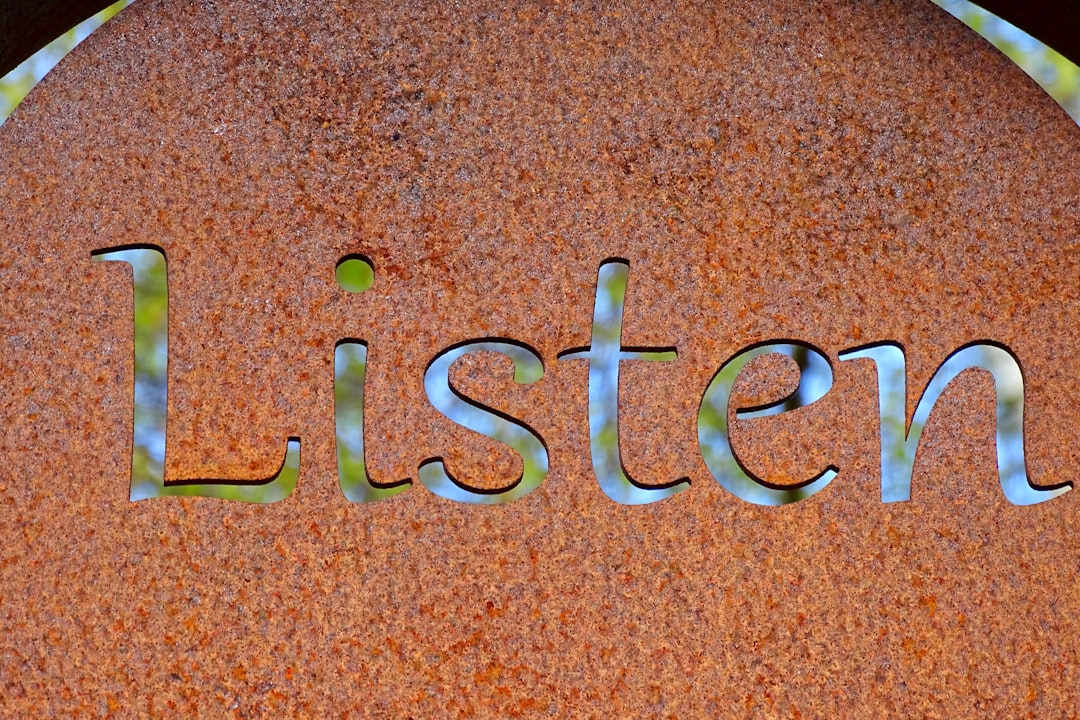
Effective communication is the cornerstone of human interaction, serving as the primary means through which individuals convey thoughts, ideas, and emotions. In both personal and professional contexts, the ability to communicate effectively can significantly influence relationships, decision-making processes, and overall success. For instance, in a workplace setting, clear communication can lead to enhanced collaboration among team members, fostering an environment where creativity and innovation thrive.
Conversely, poor communication can result in misunderstandings, decreased morale, and even conflict, ultimately hindering productivity and progress. Moreover, effective communication extends beyond mere verbal exchanges; it encompasses a range of skills that include active listening, nonverbal cues, and emotional intelligence. Each of these components plays a vital role in ensuring that messages are not only delivered but also received and understood as intended.
For example, a manager who communicates expectations clearly while also being receptive to feedback creates a culture of openness and trust. This dynamic not only empowers employees but also encourages them to engage more fully in their roles, leading to improved outcomes for the organization as a whole.
Key Takeaways
- Effective communication is crucial for success in personal and professional relationships.
- Active listening involves fully concentrating, understanding, responding, and remembering what is being said.
- Nonverbal communication, such as body language and facial expressions, can greatly impact the message being conveyed.
- Assertiveness and confidence are key components of effective communication, allowing individuals to express their thoughts and needs clearly.
- Overcoming barriers to effective communication, such as cultural differences and language barriers, is essential for effective communication.
Developing Active Listening Skills
Active listening is a critical component of effective communication that often goes overlooked. It involves fully concentrating on what is being said rather than merely hearing the words. This skill requires the listener to engage with the speaker through verbal affirmations and nonverbal cues, such as nodding or maintaining eye contact.
By doing so, the listener demonstrates genuine interest and respect for the speaker’s message.
To cultivate active listening skills, individuals can employ several techniques.
One effective method is to practice reflective listening, where the listener paraphrases what the speaker has said to confirm understanding. This technique not only reinforces the speaker’s message but also encourages further dialogue. Additionally, minimizing distractions—such as silencing mobile devices or closing unnecessary tabs on a computer—can enhance focus during conversations.
By creating an environment conducive to active listening, individuals can foster deeper connections and more meaningful exchanges.
Improving Nonverbal Communication

Nonverbal communication encompasses a wide array of signals that convey meaning without the use of words. This includes body language, facial expressions, gestures, posture, and even the physical distance between communicators. Research indicates that a significant portion of human communication is nonverbal; some studies suggest that up to 93% of communication effectiveness is determined by nonverbal cues.
For example, a confident posture can convey authority and assurance, while crossed arms may signal defensiveness or resistance. Understanding these nuances is essential for anyone looking to enhance their communication skills. Improving nonverbal communication begins with self-awareness.
Individuals should take time to observe their own body language and consider how it may be perceived by others. Practicing in front of a mirror or recording oneself during mock conversations can provide valuable insights into one’s nonverbal signals. Additionally, being attuned to the nonverbal cues of others can enhance interpersonal interactions.
For instance, noticing when someone appears disengaged or uncomfortable can prompt a communicator to adjust their approach or seek clarification. By honing nonverbal communication skills, individuals can create more engaging and effective interactions.
Mastering Assertiveness and Confidence
| Metrics | Value |
|---|---|
| Number of participants | 150 |
| Completion rate | 85% |
| Overall satisfaction | 4.5/5 |
| Post-training confidence level | 90% |
Assertiveness is the ability to express one’s thoughts, feelings, and needs openly and honestly while respecting the rights of others. It is a crucial aspect of effective communication that allows individuals to advocate for themselves without resorting to aggression or passivity. Mastering assertiveness involves understanding one’s own value and being able to articulate it confidently.
For example, in a negotiation scenario, an assertive individual would clearly state their position while remaining open to dialogue and compromise. Building confidence in communication often requires practice and self-reflection. Individuals can start by identifying situations where they struggle to assert themselves and developing strategies to address these challenges.
Role-playing scenarios with friends or colleagues can provide a safe space to practice assertive communication techniques. Additionally, employing “I” statements—such as “I feel” or “I need”—can help convey personal feelings without placing blame on others. This approach fosters constructive dialogue and encourages mutual respect in conversations.
Overcoming Barriers to Effective Communication
Barriers to effective communication can arise from various sources, including cultural differences, emotional states, and environmental factors.
For instance, in a multicultural workplace, an employee from a high-context culture may rely on implicit messages and nonverbal cues, while a colleague from a low-context culture may prioritize directness and clarity.
Recognizing these differences is essential for fostering an inclusive environment where all voices are heard. Emotional barriers also play a significant role in communication effectiveness. Stress, anxiety, or unresolved conflicts can cloud judgment and hinder one’s ability to engage constructively with others.
To overcome these barriers, individuals must develop self-regulation strategies that allow them to manage their emotions during interactions. Techniques such as deep breathing or taking a moment to collect one’s thoughts before responding can help maintain composure in challenging conversations. By addressing both cultural and emotional barriers, individuals can enhance their overall communication effectiveness.
Enhancing Emotional Intelligence

Effective Leadership through Emotional Intelligence
A leader with strong EI can discern when team members are feeling overwhelmed or disengaged and adjust their communication style accordingly to provide support or encouragement.
Practicing Self-Awareness
To enhance emotional intelligence, individuals can engage in self-reflection practices that promote greater awareness of their emotional responses. Keeping a journal to track emotional triggers and responses can provide valuable insights into patterns of behavior. Additionally, seeking feedback from trusted colleagues or friends can help identify areas for improvement in emotional awareness and empathy.
Positive Impact on Teams and Communities
By cultivating emotional intelligence, individuals not only improve their own communication skills but also contribute to more positive interactions within their teams and communities.
Tailoring Communication to Different Audiences
Effective communicators recognize that different audiences require different approaches. Tailoring communication involves adapting one’s message based on the audience’s background, interests, and level of understanding. For instance, when presenting technical information to a non-expert audience, it is essential to simplify complex concepts and use relatable analogies.
Conversely, when addressing peers in the same field, more specialized terminology may be appropriate. Understanding the audience also involves being attuned to their preferences for communication style—some may prefer directness while others appreciate a more narrative approach. Conducting audience analysis prior to important communications can provide insights into how best to engage them.
This might involve gathering information about their demographics or previous experiences with similar topics. By customizing messages for specific audiences, communicators can enhance engagement and ensure that their messages resonate effectively.
Practicing and Implementing Effective Communication Strategies
The journey toward effective communication is ongoing and requires consistent practice and implementation of various strategies. One effective approach is to engage in regular feedback loops where individuals solicit input on their communication style from peers or mentors. This feedback can highlight strengths as well as areas for improvement, allowing for targeted development over time.
Additionally, participating in workshops or training sessions focused on communication skills can provide valuable opportunities for practice in a supportive environment. Role-playing exercises that simulate real-life scenarios can help individuals refine their skills while receiving constructive feedback from facilitators and peers alike. By committing to continuous learning and practice in effective communication strategies, individuals can cultivate stronger relationships both personally and professionally while enhancing their overall effectiveness in various contexts.
Effective communication skills are crucial in various situations, including when visiting a friend in the hospital. In this article, the importance of empathy, active listening, and clear communication is highlighted when supporting a friend during a difficult time. These skills are also essential when engaging in conversations in crowded theaters or during a weekend road trip, as discussed in this article and this article. Effective communication can help navigate various social situations and strengthen relationships.
FAQs
What are effective communication skills?
Effective communication skills refer to the ability to convey information clearly and effectively, both verbally and non-verbally. This includes listening actively, expressing thoughts and ideas clearly, and understanding the needs and perspectives of others.
Why are effective communication skills important?
Effective communication skills are important in both personal and professional settings. They help to build strong relationships, resolve conflicts, and convey information in a clear and understandable manner. In the workplace, effective communication skills are essential for collaboration, teamwork, and leadership.
What are some examples of effective communication skills?
Examples of effective communication skills include active listening, clear and concise speaking, non-verbal communication (such as body language and facial expressions), empathy, and the ability to adapt communication style to different audiences.
How can one improve their communication skills?
Improving communication skills can be achieved through practice, self-awareness, and seeking feedback. This can include taking communication skills training, practicing active listening, and being mindful of non-verbal cues. Additionally, reading and learning about effective communication techniques can also help improve skills.
What are the benefits of having effective communication skills?
Having effective communication skills can lead to improved relationships, increased productivity, better conflict resolution, and enhanced leadership abilities. In personal relationships, effective communication can lead to greater understanding and connection with others. In the workplace, it can lead to better teamwork, collaboration, and overall success.



